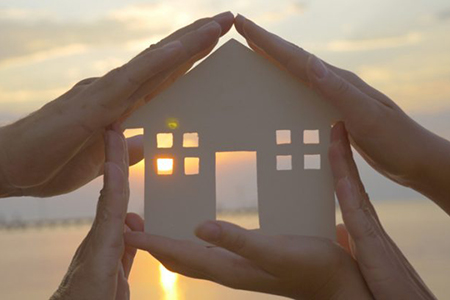When disasters strike, they come without warning. This is why you need to prepare for emergencies ahead of time. These 10 tips will help safeguard your home and family, and save you time, money, and stress should an emergency occur.
Protect your home from break-ins. A home invasion occurs every thirteen seconds in the U.S. This alarmingly high rate means it’s essential to safeguard your home from burglars by investing in a home security system.
Know potential threats and emergencies relevant to your location. If you live in the Midwest, tornados are a bigger threat than floods. If you live in California, earthquakes are a real danger. Teach your family about the natural threats common to your location and what to do should one occur. Having a plan and instinctively knowing what to do can save your life in the event of a disaster.
Inspect your outdoor lighting. Make sure to check your outdoor lights to see if any need to be added or replaced. Well-lit homes help deter burglars and prevent accidents.
Perform regular home safety checks. Every month, inspect your home for signs of broken or damaged items. Make sure your roof, basement, attic, pipes, and foundation are in good condition. Check your door locks, garage door, and windows for any broken parts. Regularly fixing up your home will help maintain its value and keep it in great condition.
Test your carbon monoxide and smoke detectors. An average of $12 billion in personal property is lost in fires each year. Protect your home and personal items by routinely testing your carbon monoxide and smoke detectors. Not only will this protect your home and property, but it can also save your life.
Inspect your fire extinguisher. Check the pressure gauge to see if the needle is in the green, and replace or service it if it isn’t. Also examine the hose and nozzle for cracks—you’ll need to replace your fire extinguisher if the handle is missing the locking pin or broken. Should a home fire occur, you will be prepared to handle the situation because your fire extinguisher will be in great working condition.
Create an emergency communication plan. Discuss what everyone in your home will do in case of a disaster. Talk with each family member about their responsibilities, where you will meet, and how to communicate with one another. If communication lines are down, it’s important to have a central meeting location established so everyone can meet and regroup. Discuss different disaster scenarios and come up with a communication and action plan that everyone knows and can enact if necessary.
List relevant contact information and make it easily accessible to everyone. Keep contact information on hand in case of an emergency. While you may keep numbers in your cellphone, it’s smart to keep a hard copy of key contacts in your home. This list can include your primary care physician, poison control, and a trusted neighbor.
Keep 72-hour emergency kits in your home and car. The CDC recommends putting together an emergency kit that includes the following.
- One gallon of water per person, per day
- Non-perishable food that is easy to prep
- A can opener
- Important medication
- A radio
- Flashlights
- Batteries
- Toilet paper
Compile and regularly update your home inventory. If you need to file an insurance claim after a blizzard or burglary, it’ll help to have an itemized inventory for your valuable home goods. Store instruction manuals, serial numbers, and important receipts in files that you can access easily when needed.
Incorporate these 10 safety hacks into your to-do list and you’ll be able to safeguard your home, property, and family should a disaster or emergency occur.
Sage Singleton is a home and community safety expert for SafeWise. Singleton has written for a variety of audiences ranging from government sites to lifestyle magazines. In her free time, she enjoys wedding planning, traveling and learning French.
This was originally published on RISMedia’s blog, Housecall. Visit the blog daily for housing and real estate tips and trends. Like Housecall on Facebook and follow @HousecallBlog on Twitter.











